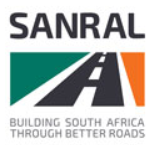Alternative options across Drakensberg to be considered
Sanral is investigating alternative options to increase the capacity of the N3 route across the Drakensberg following the decision by government to scrap the proposed De Beers Pass project.
"We have to plan pro-actively for the expected growth in road traffic volumes between Gauteng and KwaZulu-Natal and to find workable solutions that will provide road users with safe, comfortable and congestion-free journeys," says Vusi Mona, the spokesperson of Sanral.
The 614km long N3 is the primary road from Johannesburg, through the Free State and the KwaZulu-Natal Midlands to Durban. The toll road is managed by the N3 Toll Concession.
Mona says government's decision means that the De Beers Pass project has been cancelled and will not be implemented in terms of the concession agreement.
However, Sanral has been asked to investigate an alternative option along the existing N3 which would address the safety and mobility issues. "We have started to conduct detailed investigations and the costing of an alternative option and the findings of our study will be presented to the Minister of Transport," says Mona.
Government will then consider all the engineering and financial considerations before taking a decision on how to proceed with the project.
Mona says the existing Van Reenen's Pass Route was built in 1961 and is no longer able to effectively handle the growth in traffic volumes. Sanral has, through the years, added many safety features to the road but is still concerned about the number of crashes on the road and the inconvenience caused for road users through sporadic road closures.
New developments will have to address current safety issues related to the alignment of the current road through Van Reenen's Pass including the steep gradients, sharp curves and bottlenecks that will require extensive engineering solutions.
The N3 is an important road freight corridor and, despite efforts to move large volumes of freight to rail, expectations are that at least 60% of movement between Gauteng and Durban will still remain on the road network.
Decisions on funding will be taken once an alternative route has been finalised. Sanral will continue to communicate with all stakeholders, including provincial governments, local councils, communities and road users as decisions are taken and the project unfolds, says Mona.
